We are free to pick and choose what we want to eat each day, thanks to grocery stores and restaurants, but imagine not being able to eat a certain type of food because it was banned in your country.
Many countries around the world have a federal organization that deals with banned substances, including food. In the U.S. it is called the Food and Drug Administration. Here is a list of ten foods you won’t see on the shelf at your grocery store:
10. Uncertified Chilean Sea Bass (Patagonian Toothfish)
Why It’s Banned
At first, the uncertified Chilean sea bass was banned by 24 nations, including the U.S. due to the fact that it was extremely popular in restaurants as well as in the home and many feared it would become endangered. The fish is known for having flaky white flesh and a high fat content, which makes it tasty. Today, the fish is banned in even more countries due to the fact that it has become over-fished.
At first, the uncertified Chilean sea bass was banned by 24 nations, including the U.S. due to the fact that it was extremely popular in restaurants as well as in the home and many feared it would become endangered. The fish is known for having flaky white flesh and a high fat content, which makes it tasty. Today, the fish is banned in even more countries due to the fact that it has become over-fished.
Does It Really Stick?
Of course this doesn’t stick as well as many would hope. We all know something that’s rare is seen as a prize possession. Those who are able to catch Chilean sea bass often sell them illegally at extremely high prices. Farmers also raise them in fish farms. Though not banned everywhere, many countries have a limit on who can import the fish. One must be certified by the National Oceanic and Atmospheric Administration before being able to legally provide the fish.
Of course this doesn’t stick as well as many would hope. We all know something that’s rare is seen as a prize possession. Those who are able to catch Chilean sea bass often sell them illegally at extremely high prices. Farmers also raise them in fish farms. Though not banned everywhere, many countries have a limit on who can import the fish. One must be certified by the National Oceanic and Atmospheric Administration before being able to legally provide the fish.
Want to Try It?
If you’re just interested in trying Chilean sea bass, you can surely find some that has been MSC-certified.
If you’re just interested in trying Chilean sea bass, you can surely find some that has been MSC-certified.
9. Foie Gras
Why It’s Banned
Foie gras is a delicacy made out of duck or goose liver. It is banned in Turkey, the European Union, and Israel due to a process called force-feeding. To make foie gras, birds are force-fed corn mash or some other type of food about 8 days before they are slaughtered in order to enlarge the liver and give it a fatty consistency. Many see this process as extremely cruel and harmful to the animal, as its body is not accustomed to eating so much food naturally in the wild. In 2005 foie gras was banned in Chicago, but the ban was lifted in 2008. Many states within the U.S. have attempted to have foie gras banned, but none have succeeded as of yet.
Foie gras is a delicacy made out of duck or goose liver. It is banned in Turkey, the European Union, and Israel due to a process called force-feeding. To make foie gras, birds are force-fed corn mash or some other type of food about 8 days before they are slaughtered in order to enlarge the liver and give it a fatty consistency. Many see this process as extremely cruel and harmful to the animal, as its body is not accustomed to eating so much food naturally in the wild. In 2005 foie gras was banned in Chicago, but the ban was lifted in 2008. Many states within the U.S. have attempted to have foie gras banned, but none have succeeded as of yet.
Does It Really Stick?
Yes and no. In the U.S., you can easily find foie gras if you visit the right restaurant. In other countries that ban the food, it may be much harder to find it. It’s not banned in the US right now, so there are farmers that own goose or duck farms and will force-feed them in order to have foie gras. Today the practice of force-feeding to have foie gras is widespread.
Yes and no. In the U.S., you can easily find foie gras if you visit the right restaurant. In other countries that ban the food, it may be much harder to find it. It’s not banned in the US right now, so there are farmers that own goose or duck farms and will force-feed them in order to have foie gras. Today the practice of force-feeding to have foie gras is widespread.
Want to Try It?
Find a local restaurant that serves foie gras and you’re ready to go. If you’re a little bit more daring (and rich), make your way to France where the dish originated and today is still seen as an important part of French cuisine. China is also the ideal place to visit to find this meal.
Find a local restaurant that serves foie gras and you’re ready to go. If you’re a little bit more daring (and rich), make your way to France where the dish originated and today is still seen as an important part of French cuisine. China is also the ideal place to visit to find this meal.
8. Shark Fins
Why It’s Banned
Though still in the process of being banned world wide, the slicing of shark fins is now banned in Scottish waters, as well as UK waters. In Hawaii, the practice is banned entirely due to the fact that 60,000 sharks were found dead each year. The practice, often seen as barbaric, has been banned in countries because it is seen as cruel and brutal and many species of rare sharks are becoming endangered, or even extinct. Shark fins are often used in shark fin soup which is seen as a luxury meal in most Asian countries. These sharks are also finned in Mexico, U.S., and U.K. waters.
Though still in the process of being banned world wide, the slicing of shark fins is now banned in Scottish waters, as well as UK waters. In Hawaii, the practice is banned entirely due to the fact that 60,000 sharks were found dead each year. The practice, often seen as barbaric, has been banned in countries because it is seen as cruel and brutal and many species of rare sharks are becoming endangered, or even extinct. Shark fins are often used in shark fin soup which is seen as a luxury meal in most Asian countries. These sharks are also finned in Mexico, U.S., and U.K. waters.
Does It Really Stick?
As of now, it’s safe to say that a shark is finned each day. The laws banning the practice in larger countries are somewhat new and are still being put into place. Many times this practice goes unseen, as fisherman in random places will catch the shark, bring them to the shore or on the boat, cut off their fins, and put them back into the water, where they ultimately die.
As of now, it’s safe to say that a shark is finned each day. The laws banning the practice in larger countries are somewhat new and are still being put into place. Many times this practice goes unseen, as fisherman in random places will catch the shark, bring them to the shore or on the boat, cut off their fins, and put them back into the water, where they ultimately die.
Want to Try It?
If you’re looking to make Jaws your dinner, you’ll easily find shark fins offered in Asian countries, especially China. You could also travel to Mexico, where the shark fins are often traded. In the U.S. you can find shark fin soup, just at a very steep price.
If you’re looking to make Jaws your dinner, you’ll easily find shark fins offered in Asian countries, especially China. You could also travel to Mexico, where the shark fins are often traded. In the U.S. you can find shark fin soup, just at a very steep price.
7. Raw Milk
Why It’s Banned
Before the Industrial Revolution, raw milk was an everyday commodity. This means that the milk was not pasteurized. People didn’t have the technology yet, plus many urban families owned their own dairy animals, such as goats and cows. New methods of processing milk such as pasteurization led to the banning of raw milk. Today, improved farming conditions and better testing mean raw milk is less risky, but it continues to be banned in 22 states as well as Canada.
Before the Industrial Revolution, raw milk was an everyday commodity. This means that the milk was not pasteurized. People didn’t have the technology yet, plus many urban families owned their own dairy animals, such as goats and cows. New methods of processing milk such as pasteurization led to the banning of raw milk. Today, improved farming conditions and better testing mean raw milk is less risky, but it continues to be banned in 22 states as well as Canada.
Does It Really Stick?
In many countries, you’ll find bottles of raw milk offered. In the U.S., there is a continuous debate raging on about the healthfulness of raw milk, while others insist that it is full of germs. In Europe, Asia, Africa, and other countries, you’ll often find raw milk and even raw cheese available. In the U.S., only 28 states allow the consumption of raw milk. This is usually done through cow shares (where consumers own part of a cow and share the costs and the milk it produces).
In many countries, you’ll find bottles of raw milk offered. In the U.S., there is a continuous debate raging on about the healthfulness of raw milk, while others insist that it is full of germs. In Europe, Asia, Africa, and other countries, you’ll often find raw milk and even raw cheese available. In the U.S., only 28 states allow the consumption of raw milk. This is usually done through cow shares (where consumers own part of a cow and share the costs and the milk it produces).
Want to Try It?
You’ve got plenty of options here. Slap on your cowboy hat, move out to the country, and join a cow share. Or you can buy a cow, or use someone else’s cow and just do a little milking with a cup in hand. Voila. For commercial raw milk, you may need to travel a little, but you’re sure to find a bottle of it somewhere.
You’ve got plenty of options here. Slap on your cowboy hat, move out to the country, and join a cow share. Or you can buy a cow, or use someone else’s cow and just do a little milking with a cup in hand. Voila. For commercial raw milk, you may need to travel a little, but you’re sure to find a bottle of it somewhere.
6. Absinthe
Why It’s Banned
In the 1800s, absinthe was gradually banned in many locations around the world. This was due to a large increase in violence and hallucinations, as well as mental illness. However, absinthe made its comeback during the late 1800s and early 1900s. It is said that by 1905, there were over 40 distillers just on the Swiss border providing absinthe to France and Switzerland. Again in the 20th century, researchers looked at absinthe and considered it to be highly unsafe. Though many say it’s banned due to the 20thcentury’s temperance movement, scientists at the time stated that the drink contained thujone, which, even in the smallest quantities caused psychoactive ailments. In 1915, absinthe was banned in most European countries with the exception of a few. Today in the U.S., absinthe is distilled, but is only 75% and is usually diluted with water.
In the 1800s, absinthe was gradually banned in many locations around the world. This was due to a large increase in violence and hallucinations, as well as mental illness. However, absinthe made its comeback during the late 1800s and early 1900s. It is said that by 1905, there were over 40 distillers just on the Swiss border providing absinthe to France and Switzerland. Again in the 20th century, researchers looked at absinthe and considered it to be highly unsafe. Though many say it’s banned due to the 20thcentury’s temperance movement, scientists at the time stated that the drink contained thujone, which, even in the smallest quantities caused psychoactive ailments. In 1915, absinthe was banned in most European countries with the exception of a few. Today in the U.S., absinthe is distilled, but is only 75% and is usually diluted with water.
Does It Really Stick?
While traditional absinthe is no longer made, the spirit is still distilled in many countries, notably the Czech Republic, Switzerland, France, and Spain. As of 2008, there were about 200 different types of absinthe available. In the U.S., the drink was allowed to be commercially distilled again in 2007. People just can’t keep their hands off of the Green Fairy!
While traditional absinthe is no longer made, the spirit is still distilled in many countries, notably the Czech Republic, Switzerland, France, and Spain. As of 2008, there were about 200 different types of absinthe available. In the U.S., the drink was allowed to be commercially distilled again in 2007. People just can’t keep their hands off of the Green Fairy!
Want to Try It?
You can probably easily go to a city bar and find absinthe or a local liquor/spirits shop to find it. If you’re looking for the stronger stuff, make your way over to the Czech Republic or France, and you’re sure to make absinthe your mind’s best friend. Bottoms up! Artist: Victor Oliva
You can probably easily go to a city bar and find absinthe or a local liquor/spirits shop to find it. If you’re looking for the stronger stuff, make your way over to the Czech Republic or France, and you’re sure to make absinthe your mind’s best friend. Bottoms up! Artist: Victor Oliva
5. Wild Beluga Caviar
Why It’s Banned
In 2005, the United States Fish and Wildlife Service put a ban on the import of Beluga caviar from the Caspian Sea. Much like the redfish listed later on, the Beluga sturgeon was becoming endangered and in order to protect the creature, a ban was implemented. In 2007 the ban was lifted with restrictions, allowing 96 tons of the caviar to be sold throughout the world. Today, spotting this caviar is still difficult: just like the Beluga sturgeon fish itself.
In 2005, the United States Fish and Wildlife Service put a ban on the import of Beluga caviar from the Caspian Sea. Much like the redfish listed later on, the Beluga sturgeon was becoming endangered and in order to protect the creature, a ban was implemented. In 2007 the ban was lifted with restrictions, allowing 96 tons of the caviar to be sold throughout the world. Today, spotting this caviar is still difficult: just like the Beluga sturgeon fish itself.
Does It Really Stick?
You can find this type of caviar sold online from many different vendors. Or you could find one of those expensive restaurants that serve a tiny spoon of the caviar for hundreds of bucks.
You can find this type of caviar sold online from many different vendors. Or you could find one of those expensive restaurants that serve a tiny spoon of the caviar for hundreds of bucks.
Want to Try It?
If you’re really itching to try some Wild Beluga caviar, there are online companies that claim to offer it; though, you’ll be paying a pretty hefty price for some pea-sized eggs. One website sells the caviar for $2095 for 250g/8.8oz. On the other hand, you can, in the back of your mind, forget the “wild” part of the wild beluga caviar and purchase caviar from a beluga that has been farm raised. Or if you’re lucky, you can score some that has been slowly allowed back into the U.S. since 2007.
If you’re really itching to try some Wild Beluga caviar, there are online companies that claim to offer it; though, you’ll be paying a pretty hefty price for some pea-sized eggs. One website sells the caviar for $2095 for 250g/8.8oz. On the other hand, you can, in the back of your mind, forget the “wild” part of the wild beluga caviar and purchase caviar from a beluga that has been farm raised. Or if you’re lucky, you can score some that has been slowly allowed back into the U.S. since 2007.
4. Sassafras
Why It’s Banned
In the past, sassafras was a widely used plant. It was often used by Indian tribes to treat common ailments, as well as a way to have some sort of aromatherapy. It is said that the herb could sure a cold, stomach ache, and other ailments. It was also used as a cure for syphilis. Before the 1960s, sassafras was used in many different foods, and even drinks. Sassafras tea was highly common, and the sassafras roots were made to create root beer. In the south, the herb was used in Creole soups and stews as a common seasoning. However, in the 1960s, the FDA banned all use of sassafras and any ingredient made out of it, most notably, safrole, a colorless or slightly black oil extracted from the root-bark or fruit. It was banned due to the fact that it is possibly carcinogenic, as determined by lab rat experiments, which concluded that rats given sassafras often contracted liver cancer. Safrole is the primary precursor for all manufacture of MDMA, better known as the drug ecstasy (source).
In the past, sassafras was a widely used plant. It was often used by Indian tribes to treat common ailments, as well as a way to have some sort of aromatherapy. It is said that the herb could sure a cold, stomach ache, and other ailments. It was also used as a cure for syphilis. Before the 1960s, sassafras was used in many different foods, and even drinks. Sassafras tea was highly common, and the sassafras roots were made to create root beer. In the south, the herb was used in Creole soups and stews as a common seasoning. However, in the 1960s, the FDA banned all use of sassafras and any ingredient made out of it, most notably, safrole, a colorless or slightly black oil extracted from the root-bark or fruit. It was banned due to the fact that it is possibly carcinogenic, as determined by lab rat experiments, which concluded that rats given sassafras often contracted liver cancer. Safrole is the primary precursor for all manufacture of MDMA, better known as the drug ecstasy (source).
Does It Really Stick?
Due to its possibly harmful nature, most people stay away from sassafras. Today, colors and artificial flavoring are used in to make up for the lack of sassafras. Other companies use sassafras that has been cleaned and is rid of safrole. It is highly possible to find online vendors selling sassafras, while in some places you may find sassafras sold as a body wash or potpourri. You may also find people offering sassafras bark.
Due to its possibly harmful nature, most people stay away from sassafras. Today, colors and artificial flavoring are used in to make up for the lack of sassafras. Other companies use sassafras that has been cleaned and is rid of safrole. It is highly possible to find online vendors selling sassafras, while in some places you may find sassafras sold as a body wash or potpourri. You may also find people offering sassafras bark.
Want to Try It?
It’s pretty hard to find pure sassafras. Most of the herb used today is free of safrole. Unless you want to eat body wash or sassafras bark, you’re pretty much out of luck. Companies that offer herbal remedies and pills do sell sassafras supplements because herbal and dietary supplements are not under the control of the FDA.
It’s pretty hard to find pure sassafras. Most of the herb used today is free of safrole. Unless you want to eat body wash or sassafras bark, you’re pretty much out of luck. Companies that offer herbal remedies and pills do sell sassafras supplements because herbal and dietary supplements are not under the control of the FDA.
3. Redfish
Why It’s Banned
In the 1980s, a chef named Paul Prudhomme of New Orleans publicly shared his blackened redfish recipe, which was widely sought after in the area. His recipe became so popular that it seemed every household was making blackened redfish. Though it was a great success for Prudhomme, the stock of redfish was depleted, and in July 1986, the Department of Commerce banned the selling of the fish and shut down all fisheries in order to allow the fish to naturally rebuild their population. Today, there are still prohibitions and laws that concern the catching and handling of the redfish. For instance, in Florida and most other states, fisherman are only allowed to keep one redfish a day, and any others that are caught must be put back into the water safely. In 2002, President Bush signed an executive order that restricted the catch and sale of the redfish.
In the 1980s, a chef named Paul Prudhomme of New Orleans publicly shared his blackened redfish recipe, which was widely sought after in the area. His recipe became so popular that it seemed every household was making blackened redfish. Though it was a great success for Prudhomme, the stock of redfish was depleted, and in July 1986, the Department of Commerce banned the selling of the fish and shut down all fisheries in order to allow the fish to naturally rebuild their population. Today, there are still prohibitions and laws that concern the catching and handling of the redfish. For instance, in Florida and most other states, fisherman are only allowed to keep one redfish a day, and any others that are caught must be put back into the water safely. In 2002, President Bush signed an executive order that restricted the catch and sale of the redfish.
Does It Really Stick?
Although redfish has been banned in all states in the U.S. except one, redfish continues to be very popular. It is a particular favorite in the southern states and sought out by those seeking authentic Creole food. The only state exempt from the federal law banning the selling of the fish for profit is Mississippi.
Although redfish has been banned in all states in the U.S. except one, redfish continues to be very popular. It is a particular favorite in the southern states and sought out by those seeking authentic Creole food. The only state exempt from the federal law banning the selling of the fish for profit is Mississippi.
Want to Try It?
Hop on down to Mississippi or New Orleans where there are plenty of restaurants that serve blackened redfish. The fish served at these restaurants are not sold or bought from state docks. Instead they often come from fish farms or the harvesting is done in Mexico. At times, the fish will come from the Coast Gulf. Or you could become a fisherman, catch your own blackened redfish and enjoy.
Hop on down to Mississippi or New Orleans where there are plenty of restaurants that serve blackened redfish. The fish served at these restaurants are not sold or bought from state docks. Instead they often come from fish farms or the harvesting is done in Mexico. At times, the fish will come from the Coast Gulf. Or you could become a fisherman, catch your own blackened redfish and enjoy.
2. Japanese Puffer Fish (Fugu)
Why It’s Banned
Sometimes known as blowfish, Fugu in Asian countries, this fish is banned in many countries due to its internal organs and other body parts being highly poisonous. In fact, if you eat the wrong part of this fish, or unknowingly consume a poisonous part of the fish, you will more than likely die from tetrodotoxin, which is a neurotoxin that destroys your body’s nerve tissue, paralyzing the body and then causing asphyxiation. Though, if treated in a timely matter, you can survive the poison’s attack. In 1603-1868 the Tokugawa shogunate prohibited the consumption of Fugu, but this law died down as the shogunate’s power decreased. In the European Union, selling or consuming this fish is strictly prohibited. In the U.S., it is illegal to sell, harvest, or serve the fish without having a license to do so. This was enacted in 2002.
Sometimes known as blowfish, Fugu in Asian countries, this fish is banned in many countries due to its internal organs and other body parts being highly poisonous. In fact, if you eat the wrong part of this fish, or unknowingly consume a poisonous part of the fish, you will more than likely die from tetrodotoxin, which is a neurotoxin that destroys your body’s nerve tissue, paralyzing the body and then causing asphyxiation. Though, if treated in a timely matter, you can survive the poison’s attack. In 1603-1868 the Tokugawa shogunate prohibited the consumption of Fugu, but this law died down as the shogunate’s power decreased. In the European Union, selling or consuming this fish is strictly prohibited. In the U.S., it is illegal to sell, harvest, or serve the fish without having a license to do so. This was enacted in 2002.
Does It Really Stick?
The fish is often harvested in the Pacific Ocean then sold throughout markets in Japan. Often times the fish is cleaned to get rid of the poisonous parts, frozen, and then sent off to other countries. In the U.S. there are restaurants that serve the dish. Also, despite knowing the down-right lethalness of the fish, many amateur Japanese chefs will eat the liver of the fish, which is considered to be the most poisonous part.
The fish is often harvested in the Pacific Ocean then sold throughout markets in Japan. Often times the fish is cleaned to get rid of the poisonous parts, frozen, and then sent off to other countries. In the U.S. there are restaurants that serve the dish. Also, despite knowing the down-right lethalness of the fish, many amateur Japanese chefs will eat the liver of the fish, which is considered to be the most poisonous part.
Want to Try It?
If you live near Japan or South Korea, there are still restaurants in the major cities that serve Fugu. Who wouldn’t want to spend hundreds of dollars on a flight to taste an aquatic porcupine? Not so close to Asia? In New York there are 17 restaurants that are licensed to serve Fugu.
If you live near Japan or South Korea, there are still restaurants in the major cities that serve Fugu. Who wouldn’t want to spend hundreds of dollars on a flight to taste an aquatic porcupine? Not so close to Asia? In New York there are 17 restaurants that are licensed to serve Fugu.
1. Horse Meat
Why It’s Banned
Horse meat is considered to be a taboo food in many countries, including the U.S., Ireland, Australia,Canada, and throughout various cultural groups around the world. The banning of horse meat goes back to the 8th century. Pope Zachary and Pope Gregory III both told Saint Boniface to forbid his missionaries to eat horse meat, as it had a strong correlation to the Germanic pagan rituals that the Christians were trying to eradicate. This Catholic Church stance on horse meat stands today, while others refuse to eat horse because it is seen as poor man’s meat or due to the fact that horses seem to be man’s other best friend. Both the U.S. and U.K. have banned the slaughter and consumption of horses, as they are seen as companions and labeled “sports animals.”
Horse meat is considered to be a taboo food in many countries, including the U.S., Ireland, Australia,Canada, and throughout various cultural groups around the world. The banning of horse meat goes back to the 8th century. Pope Zachary and Pope Gregory III both told Saint Boniface to forbid his missionaries to eat horse meat, as it had a strong correlation to the Germanic pagan rituals that the Christians were trying to eradicate. This Catholic Church stance on horse meat stands today, while others refuse to eat horse because it is seen as poor man’s meat or due to the fact that horses seem to be man’s other best friend. Both the U.S. and U.K. have banned the slaughter and consumption of horses, as they are seen as companions and labeled “sports animals.”
Does It Really Stick?
Though banned, horse meat and horse slaughter goes on everyday in the U.S. as well as the U.K. In fact, southern states in the U.S. are known for their slaughterhouses for horses in which the meat is sold to other countries. In the U.K. well-known chef Gordon Ramsay has encouraged citizens to eat horse meaton a regular basis.
Though banned, horse meat and horse slaughter goes on everyday in the U.S. as well as the U.K. In fact, southern states in the U.S. are known for their slaughterhouses for horses in which the meat is sold to other countries. In the U.K. well-known chef Gordon Ramsay has encouraged citizens to eat horse meaton a regular basis.
Want to Try It?
Though banned in the U.S., you can always find a way to get to Asia or parts of Europe where horse meat is seen as a fine delicacy. Or, to save some time and money, find a horse slaughterhouse in Texas, where often times the meat is shipped out of the country for consumption, illegally of course.
Though banned in the U.S., you can always find a way to get to Asia or parts of Europe where horse meat is seen as a fine delicacy. Or, to save some time and money, find a horse slaughterhouse in Texas, where often times the meat is shipped out of the country for consumption, illegally of course.
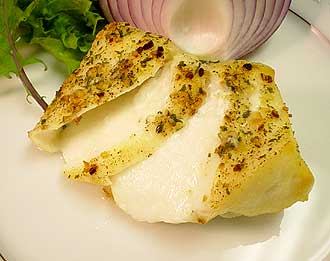
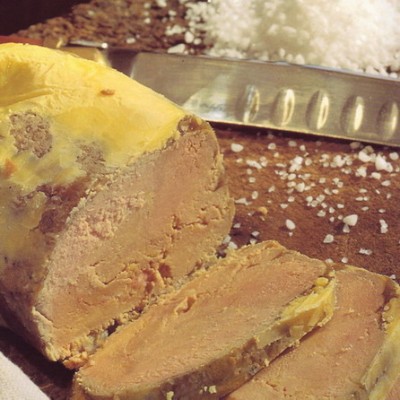
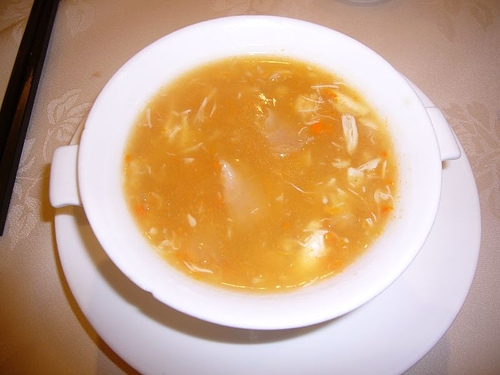


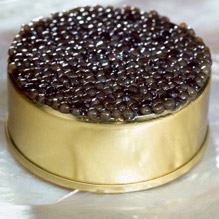


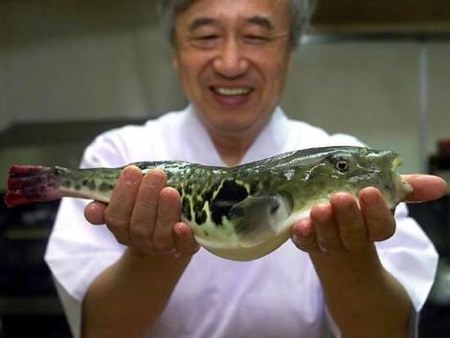
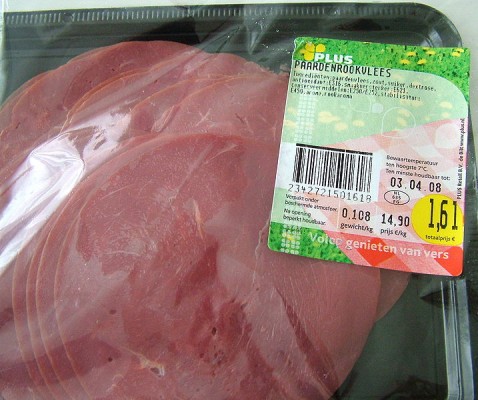
Walang komento:
Mag-post ng isang Komento